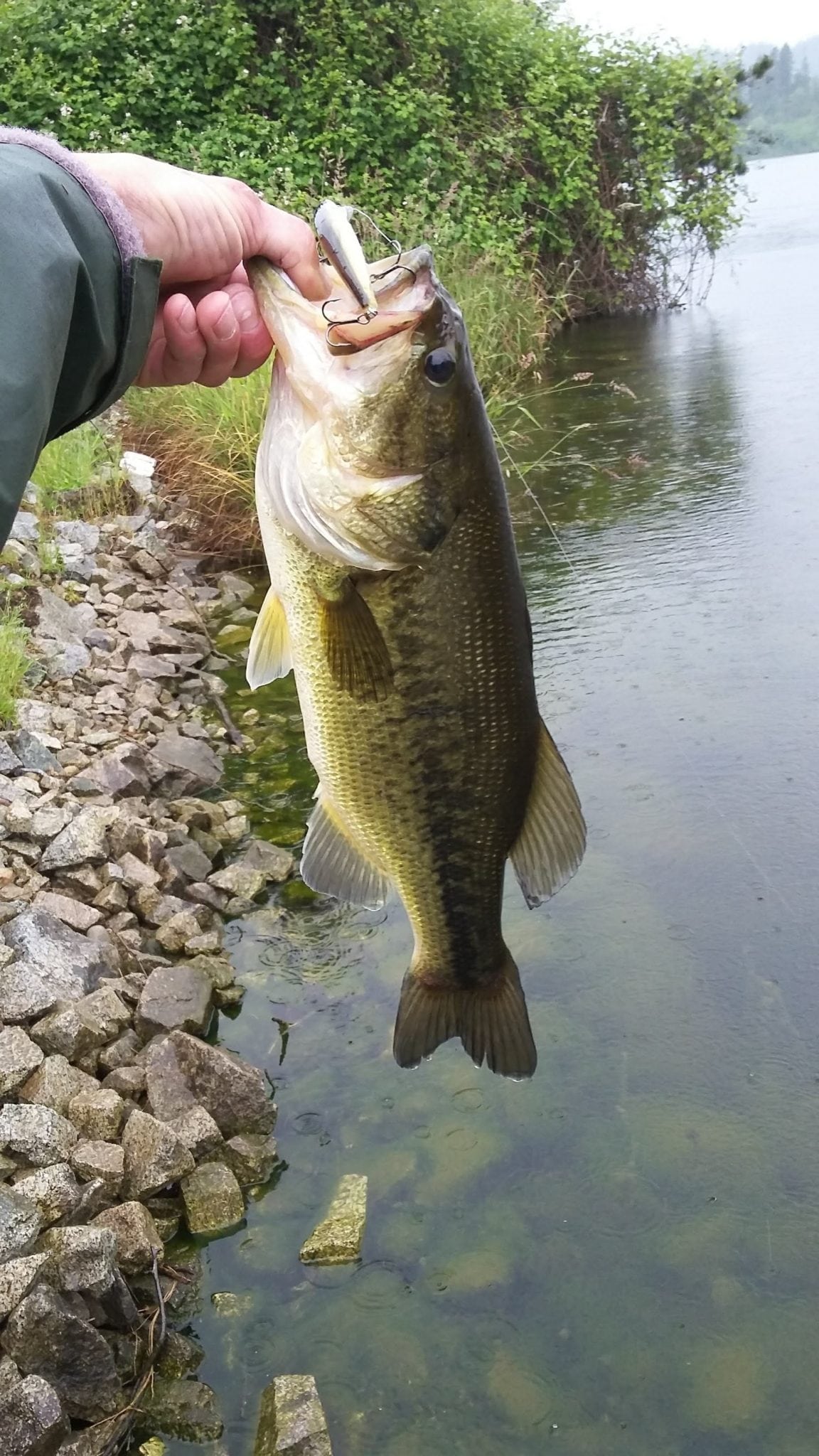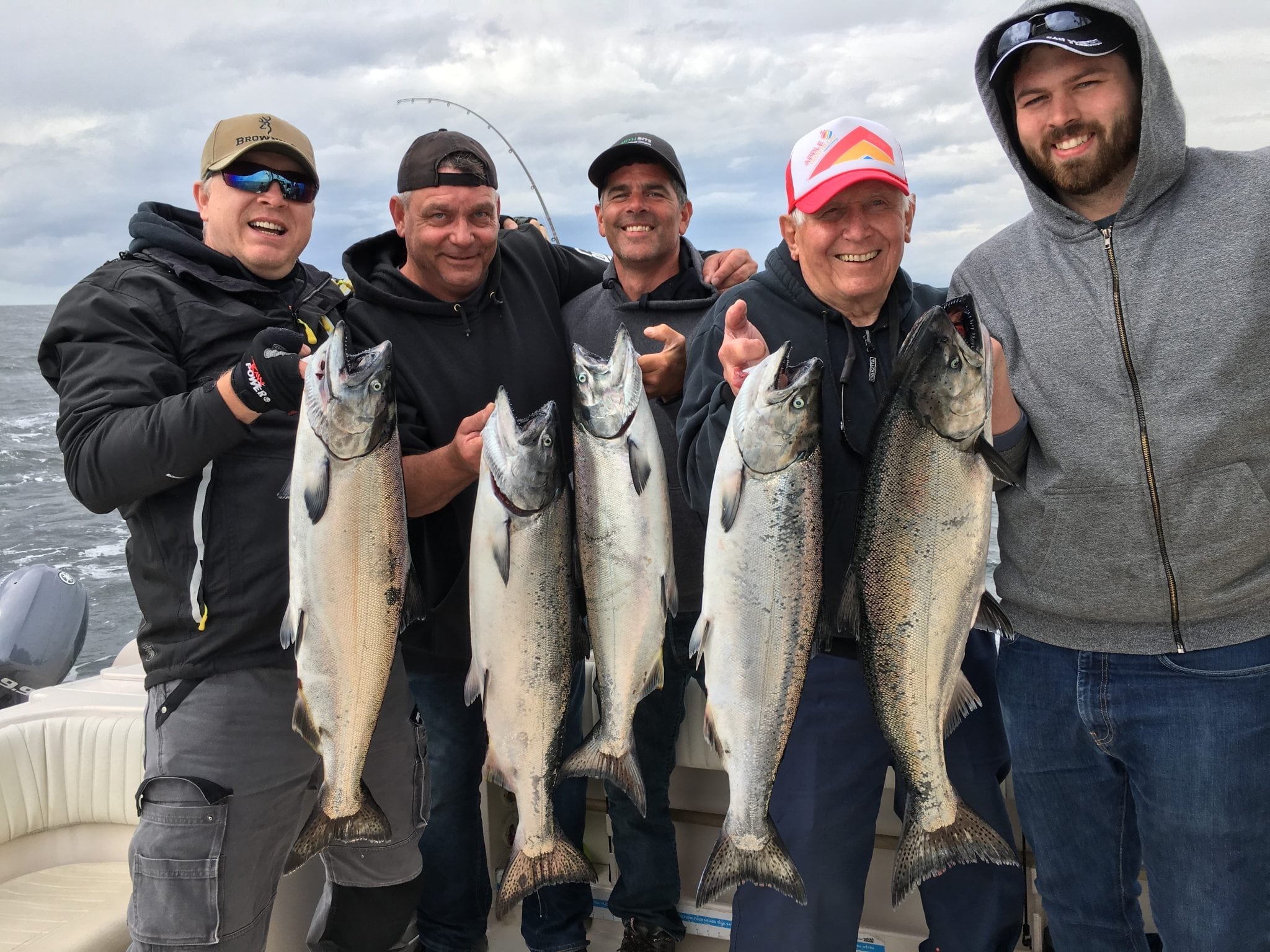OUTLOOK
Locally the weather will be cooler this weekend with some rain in the forecast. It should warm up again next week with more seasonable June temperatures. The interior will be cooler to but there is sun in the forecast and it bods well for interior lake fishing.
This week we have an update on the Capilano River. The dam is closed and the water is now low. This will change things on the fishing front. Dustin has more info in the report section below.
We also have a great bass fishing report talking about post spawn tactics. If you are getting into the local bass fishing scene you will not want to miss it.
The saltwater fishing has slowed a little this locally and for the most part we have been heading across the straight. If you weather or your schedule keeps you on this side we’ve been into some fish off South Bowen. Jason has more details in his saltwater report this week.
Lastly as we said the weather looks great for the interior this weekend and Andre has some great intel on the interior lake scene. All the reports we have heard are excellent and we expect more good reports from the weekend.
CLASSES AND COURSES
Join Matt later this month for his always popular Fly Fishing Trout Streams class. This is a great course to get you ready to hit up some great trout streams this summer.
Introduction to Fly Fishing Trout Streams
Stalking trout on mountain streams defines fly fishing. In this course we will teach you the fundamental techniques for fly fishing trout streams; dry fly fishing, nymphing, and streamer fishing.
This Introduction to Fly Fishing Trout Streams course will get you as close to being Brad Pitt (A River Runs Through It) as you will ever be! This course is comprised of one 3hr evening seminar.
Dates: June 20, 2018
Cost: $45.00
Time: 6:30pm – 9:30pm
FRESHWATER FISHING
Capilano River Fishing Report
The Capilano river is now low and clear. The dam is closed and there isn’t much water coming down from above. The low river will make fishing conditions tougher for float fisherman as the water will be very slow. When there is limited current it is hard to cover water and the fish have a long time to look at your presentation before eating it. The weir at the mouth of the river has also been set up by the First Nations and this is keeping fish from heading up river. All is not doom and gloom though. Fresh fish still sneak through with the low water and the lower water is ideal for fly fishing the upper pools. Though it is early it is also time to start watching the beach area for fish staking up in the estuary.
Next week Andre will start the beach fishing report and we already have his beach patterns in the store but for now we still recommend focusing on the river.
If you want to fish for coho that entered the river, the best method right now would be fly fishing with a full sinking line. Even with the low water, the pools in the canyon can be quite deep. You should try swinging and retrieving patterns like Cap Buggers, mickey fin, or olive leech patterns.
You can also swing small spoons and spinners. With the low water, fish can be a bit shyer and spookier so downsize your spoons, 3/16 ~ 1/4 oz Gibbs Croc is my favorite.
Remember to release any steelhead and wild Coho salmon you run into.
See you out there,
Dustin Oh
STILLWATER FISHING REPORTS
Interior Lakes Fishing Report
We had a couple unsettled weather patterns push through this last week but it looks like the heat is coming back. This year we had a pretty warm May so water temps rose quicker than past years so lake temperatures at 4000- 4500 feet are still around 60 degrees. Some lakes at 4500 and above have just started with the chironomidae hatches like Hatheume, which is at 4600 feet.
It is important to have this info when choosing a lake. These temps will determine what hatches to expect. A lot of people last week were heading out to higher elevation lakes which got snow while others enjoyed a little nicer weather with lots of hatches at the lower elevation lakes.
Another tip I can give you is if you are going to lakes regularly every week, pay attention to signs of upcoming hatches. While fishing on a lake last week with chironomids hatching look at what other nymphs swim to the surface even if it’s a couple. If the temperatures are fairly constant this doesn’t mean that there is going to be a burst of caddis hatching all of a sudden, but it indicates that the lake you are on at a given elevation will turn on when the temperatures rise a few degrees. Record your water temps and know that next time your are on the lake if the temp is even a few degrees warmer you can expect the given insect to be hatching.
I had great reports from Merritt and Kamloops, lot of big chrironomids as we call them “bombers” were hatching, they are anywhere fro size 12 to size 8. Damsel nymphs are hatching already as the temps are getting close to 70 degrees. Lots of good reports from Cariboo as well.
Andre Stepanian
Post Spawn Bass Report
Bass fishing is growing in popularity but for the majority of the Vancouver fishing crowd we are painfully uneducated on their habits and cycles. In the US or Eastern Canada general bass angler knowledge is on a varsity level. In Vancouver we are playing in a kids soccer league in comparison. Luckily there are a few dedicated anglers putting in the time and really learning the fishery. One of our good friends from the shop (who has asked to remain anonymous) is one of these anglers. He grew up fishing back east and is taking his knowledge and applying it to the Vancouver fishery. He has been kind enough to share some of his knowledge in a great report taking about post spawn bass fishing – Thanks!
With water temperatures passing 75°f in the shallow clear lakes, we have been hooking a bunch more skinny hungry fish. This is a big indicator that we are officially “post spawn”. What does that mean? On a simple level it means we are in a great time to be bass fishing – they are HUNGRY!
For the next couple of weeks, the concentration of fish will spread out off the shallow spawning beds. It is a great time to fish because they are still close to the shallow spawning beds but instead of being focused on spawning they are now focused on eating. Green bass are a very structure oriented. Meaning they stick to structure and you need to find, then cast to structure to catch them. Casting into the abyss and hoping for a bite is rarely productive this time of year.
Look for 3-7 ft of water between the shallow spawning beds and the main lake basin. If you were out in the last few weeks and saw fish in the shallows spawning, go back to these spots and look for structure in deeper areas within 10-30 m of the shallow spawning beds. Look for drop-offs, weed lines and transitions (rock to sand to weeds, etc.) Find big rocks, trees, stumps, lay downs, bushes, or just a patch of different weed in or close to any of the main structure area your fishing. Once you’ve found a piece of structure we need to find the spot within the spot so to speak. This means any feature to the log, rock or weed bed that might hide a fish. This is where the best casters really shine and your practice starts.
Your goal is to bump the target without hanging up. If I miss my target by more than 2-3′ I’ve made a bad cast and I re-cast. Getting as close as possible is key.
My choice of lures right now is vast, but simple. Buzz bait, spinnerbait, swimbait, jig, Texas right worm, jerkbait (my favourite). The simple part is go big, and go fast. Even in tough conditions, I’m going to pitch a big jig or worm, right in the thickest part of the “spot on the spot (SOTS)” and hop it just 2 or 3 times before the next pitch. Unless I get a hit or stir a fish, I never make the same cast twice. I will cast to the same piece of structure (“SOTS”) but I will cast at a different angles or working outward from it until I cover it all possible sight lines.
With moving baits, I focus my casts along the “lines” of the main structure (not across them) and bump the targets a few times.
The other main focus in these conditions is to make your retrieve erratic. Change the speed, stop start, and jerk your rod! {No gutters please}. I’m always changing the retrieve until I find what’s working BEST RIGHT NOW! This usually changes multiple times per day. If I haven’t stirred a fish in a high % area in 5 casts, it’s time to change something. The retrieve, bait, colour, or spot – something!
I’ve found BC Bass to be very well fed. Moving fast and covering a lot of water, and hitting the high % spots 2/3 times a day has produced the most fish for me.
The last thing I want to cover is colour. The choices are endless. I try to keep it simple. White, chartreuse, green pumpkin, pink, brown, black, blue and purple is my basic colour wheel. Sound familiar? How many combo’s can you think of? Basically, as with any type of fishing, fish what makes you feel confident. If you feel like it’s going to work, it’s definitely worth a shot. It can’t hurt.
Hope this helps you bend a stick! Cheers – Anonymous Lower Mainland Bass Guy
SALTWATER FISHING REPORTS
Vancouver Saltwater Salmon Fishing Report
We are in for some SE winds this weekend as the low pressure system sets in so make sure to bring your sweaters, jackets, and even some rain gear as it has been a bit chilly out these past few days.
The fishing has cooled off as well, at least locally. For the most part we have been running over to Entrance or Thrasher, which is pretty standard for this time of year. Once over there we are fishing the structure. There are still some fish offshore but generally in June you want to get on the structure as the fishing offshore slows down. Closer to Thrasher the water has been dirty from the Fraser plume getting pushed over on the SE and fish have been a bit shallower as a result, 100-130 ft. on the riggers, although you can still find some off the bottom on most days. Up towards Nanaimo the water is blue and clear and the fish have been deep, 200-300 ft. on the riggers, yes I said 300. So make sure you have lots of cable and an 18-pound ball. Glow blue flashers and a blue splatter back hootchy have been hot up towards Nanaimo and the regular chartreuse gear, like a glow chartreuse flasher and a chartreuse splatter back hootchy, has been good down at Thrasher.
Getting back to our side of the pond, all is not lost. There are some fish around from Cowan to Roger Curtis and into Tunstal. There was also some excellent fishing offshore of South Bowen from Roger Curtis up to Gower, in 500-600 ft., earlier in the week. It seemed to slow down mid-week though, as some transient orcas came through and scattered the fish. It might pick back up this weekend. The water is fairly dirty so productive depths have been 100-130 ft. Bright gear has been working, so lots of green and chartreuse flashers with glow and the same goes for spoons, teaser heads, and hootchies.
Crabbing has been good and we are setting crab traps on all of our trips.
Regarding the recent closures and orcas…. I have been in some meetings this past week and have some very interesting information and data to share. I just read a recent article in the Globe and Mail “Ottawa Bans Salmon Fishing to Save Whales” which is simply not true. Once you see the science you will see that this decision was very politically motivated. I am not sure how these kind of headlines are allowed, all it does is damage the economy as we are still open for fishing. I am on the water 5 in a row, but I will be presenting a document for all of you to read very soon, so thank your patience. Many of you have called the shop or emailed saying you want to help. Please keep sending us your info, as we will need your help very soon.
See you in the shop or on the water,
Jason Tonelli









